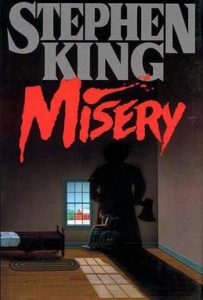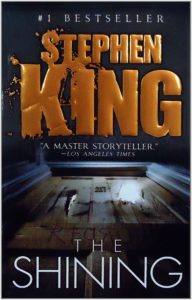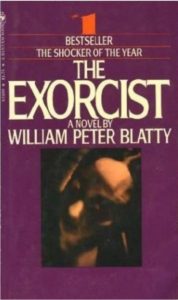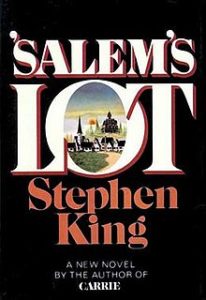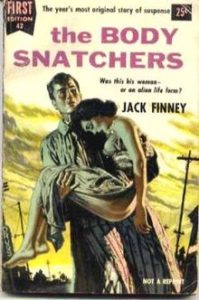I know. Perhaps it is too early for me to be writing about Halloween. I’ve been seeing merchandise for the unofficial holiday in stores since September 5th, however, so I’m actually behind the curve. Herewith please find my subjective list of Top Five frightening reads that will carry you through the next few weeks:
MISERY — I was given this newly published book as a present for Father’s Day 1987. I started reading it that afternoon and did not stop until I finished it that evening. Some dad, huh? Stephen King’s now-iconic tale of popular author Paul Sheldon’s extended visit with defrocked nurse Annie Wilkes — his Number One Fan — more than stands on its own merits. It makes/tops my list, however, because I had a relationship with someone very much like Annie, right down to her potentially dangerous mood changes and odd turns of phrase, the manifestation of which always preceded what I would come to call an “episode.” I read this book at least once a year, repenting at leisure and recalling the exhilarating sound of doom whistling by me at a near-miss.
THE SHINING — This tale about Jack Torrance, a struggling author with writer’s block the size of a Jersey Wall, and his family was already quite well known when it was adapted for a (lesser) film by Stanley Kubrick. I screamed twice while reading it. The first was during young Danny Torrance’s encounter with the girls in the hall. To this day, when I am in a large hotel with a long, carpeted corridor, I think of Danny and the girls who wanted to play with him forever.The second was during the bathroom scene. I have, unbidden, remembered this scene at inopportune moments over the course of my adult life, with unhappiness ensuing. The book as a whole, however, is a terrific example of how to wring every bit of drama that can be wrung out of a single location.
THE EXORCIST by William Peter Blatty — This early 1970s novel was a potboiler for sure — and that is one of my highest compliments — but it is a cringe-inducing tale of demonic possession and the efforts of a heroic priest to save the life and soul of an innocent girl which fed right into my Roman Catholic upbringing. My father, who spend serious and quality time in Seminary school, assisted in an exorcism and told me that Blatty’s account of possession was mild compared to what he witnessed. That might have been, but it is hard to believe that what (almost) Father Joe experienced was any more frightening than Blatty’s description.
‘SALEM’S LOT by, ummm, Stephen King — I have always enjoyed well-written vampire novels — there aren’t many of them — but there is a special place in my heart for this story of the Undead and love lost in a small town on its last legs. King’s second novel published under his own name is a textbook example of how to plant a slow, unnamable dread on the first page, nurture it, and grow it to full blossom stark terror. The television adaptation, with David Soul in the lead role, has its weaknesses but actually stands up quite well. A planned sequel was later incorporated into the Dark Tower series in THE WOLVES OF THE CALLA and SONG OF SUSANNAH but neither quite reach the atmospheric levels of fright found in this book.
THE BODY SNATCHERS by Jack Finney — I saw the 1956 movie Invasion of the Body Snatchers before I read the book upon which it is based. That august novel, although almost as old as I am, has held up much better than either myself or its film adaptation. Marketed as science fiction, THE BODY SNATCHERS is a paranoia-laden horror story about alien seed pods that land on earth and begin producing a duplicate replacement copy of each human being. You have almost certainly seen at least one of the three films based on the book but you can’t beat the source material on any level. Five-year-old mini-Me was also certain at one point that his parents had been pod-snatched. You might as well, but take a chance and pick up a copy of this classic if you’ve never read it.
You know what I’m going to ask now, I’m sure: what are your favorite horror/scary novels? And why? Thank you.

